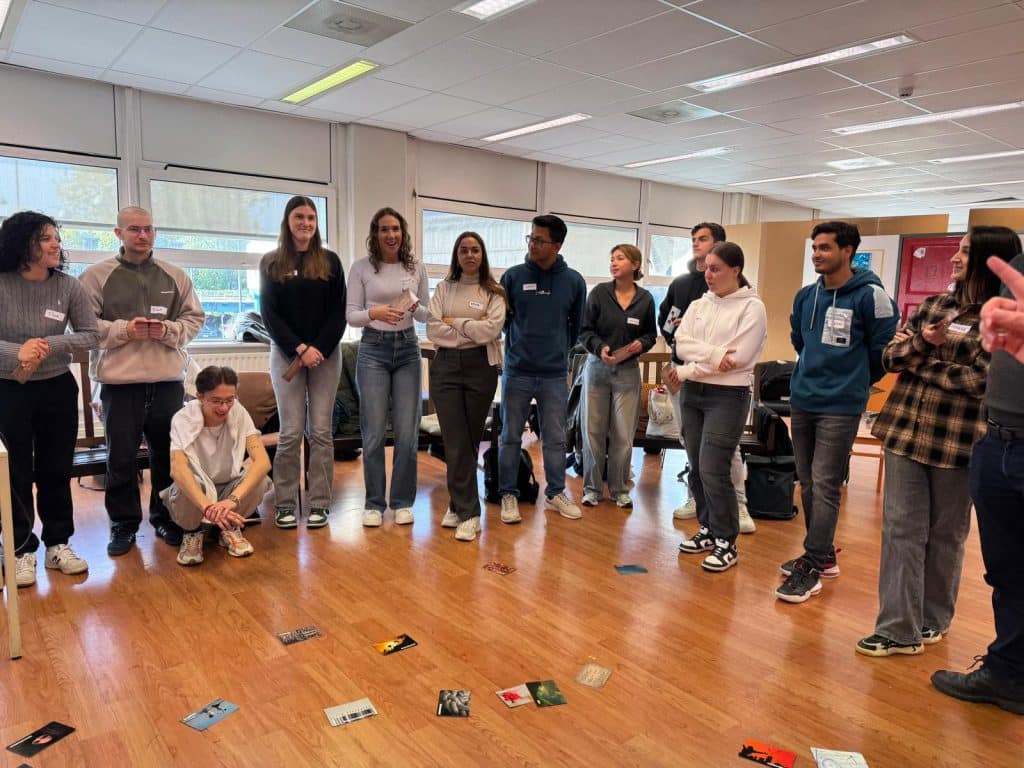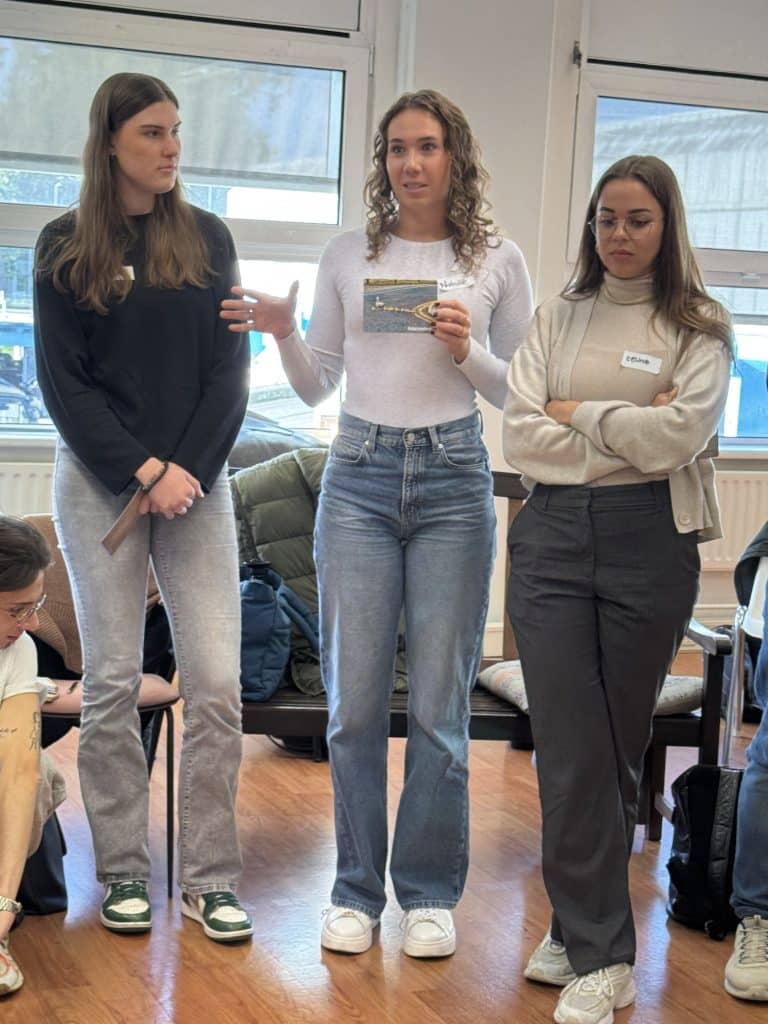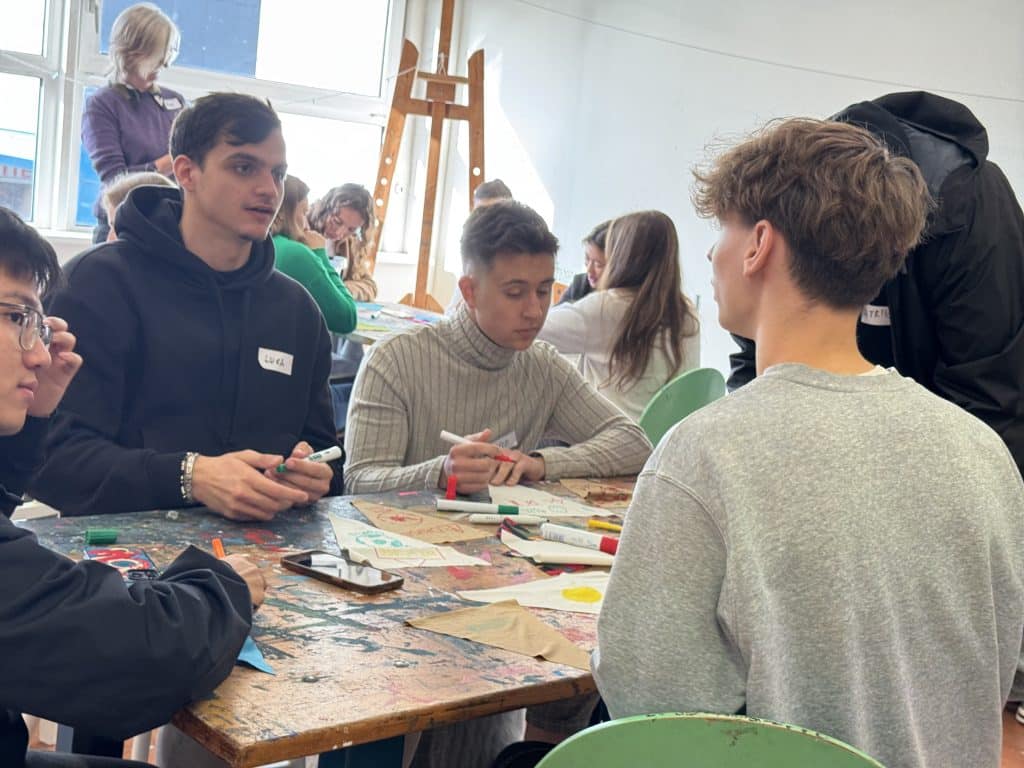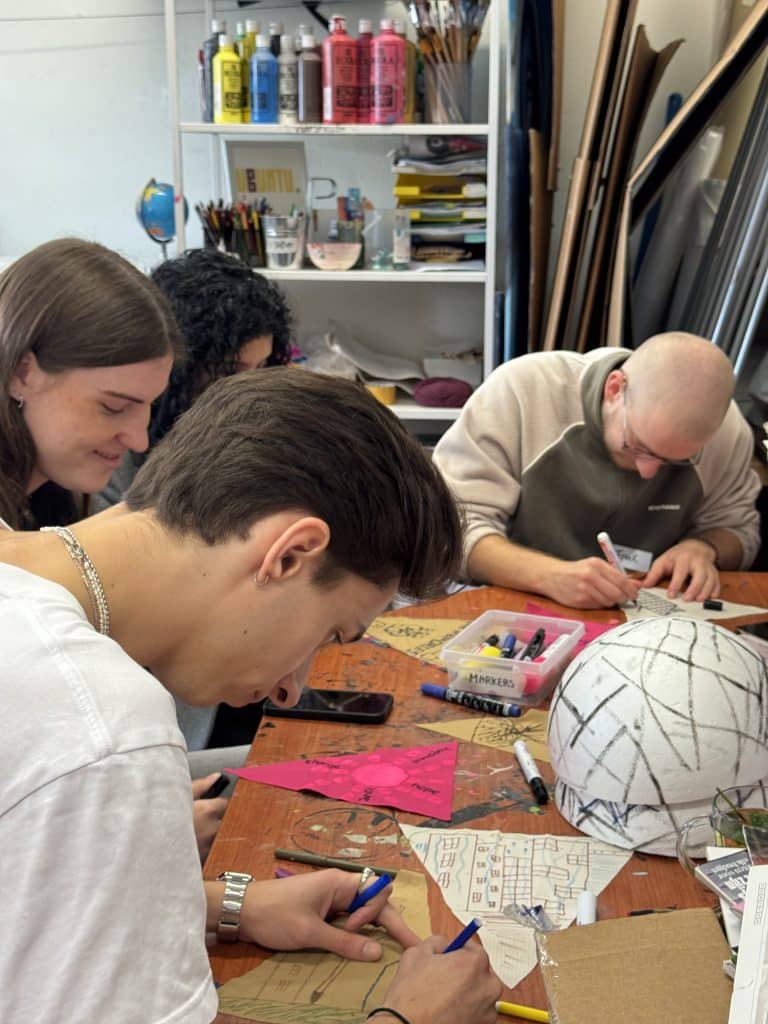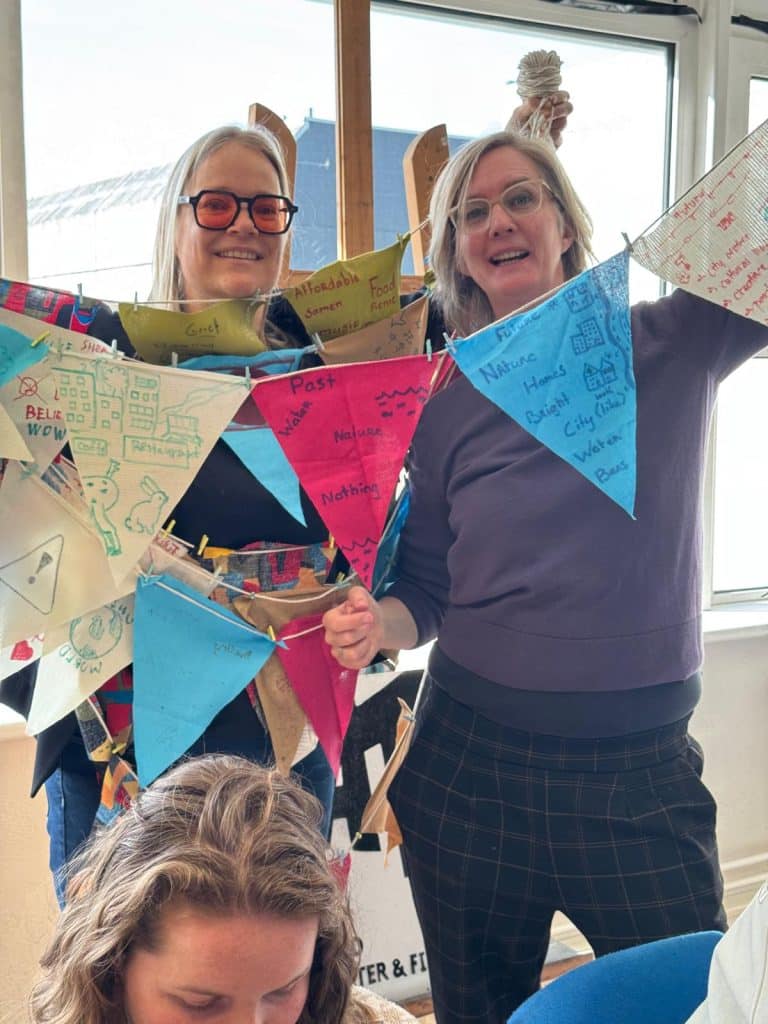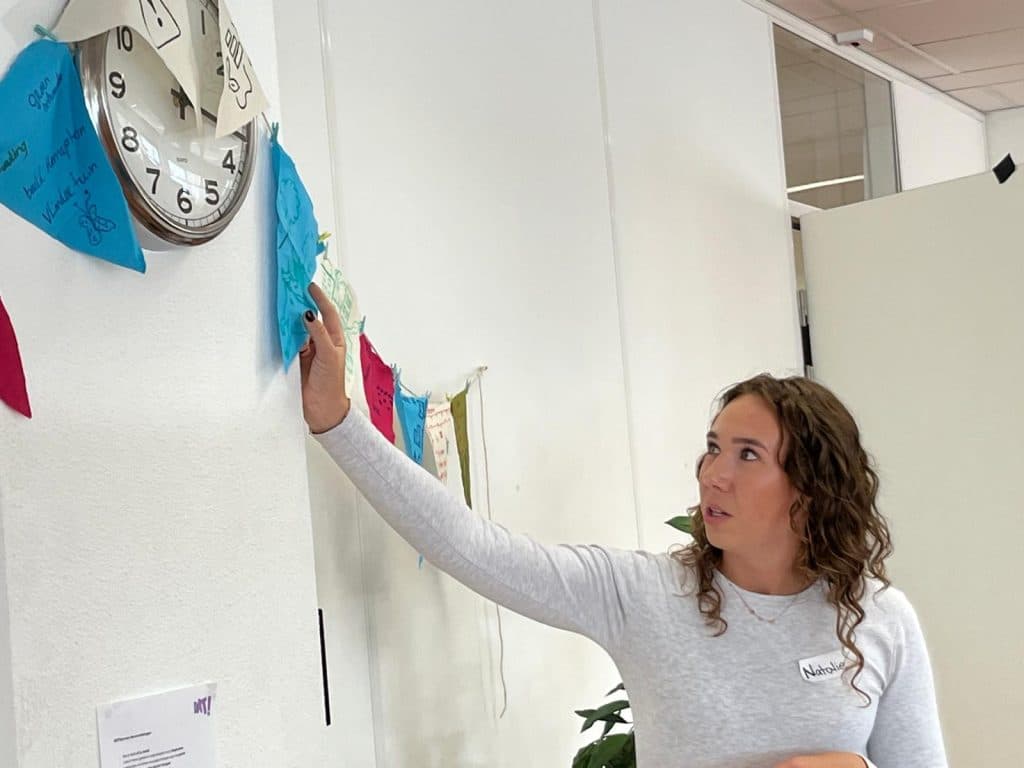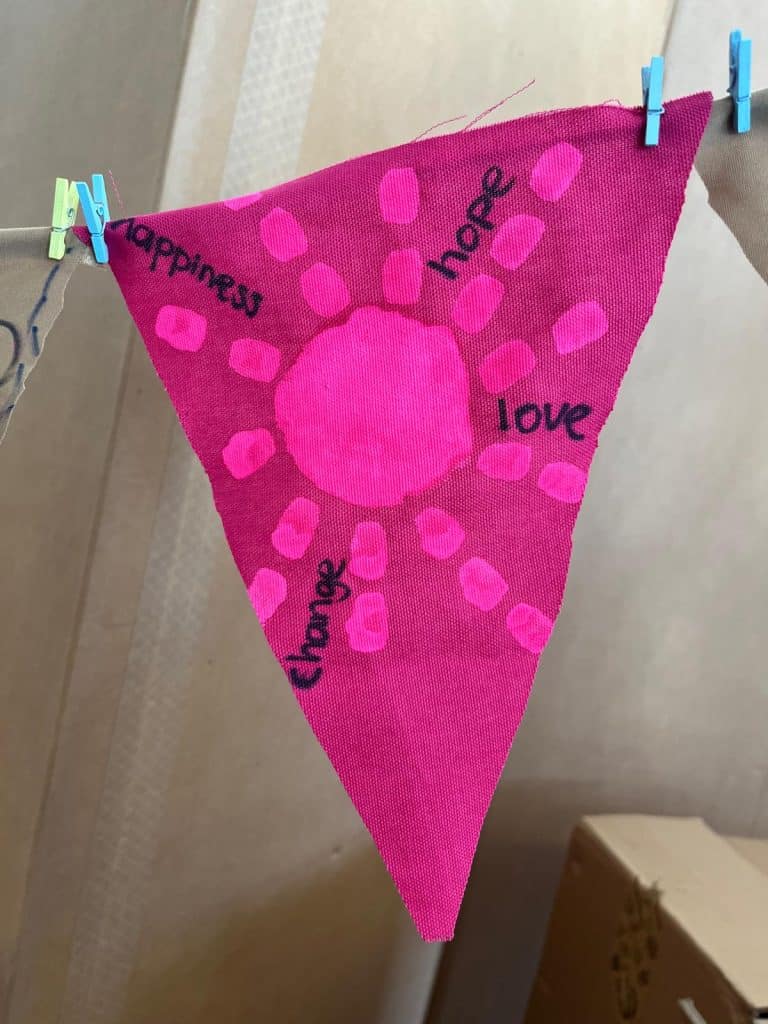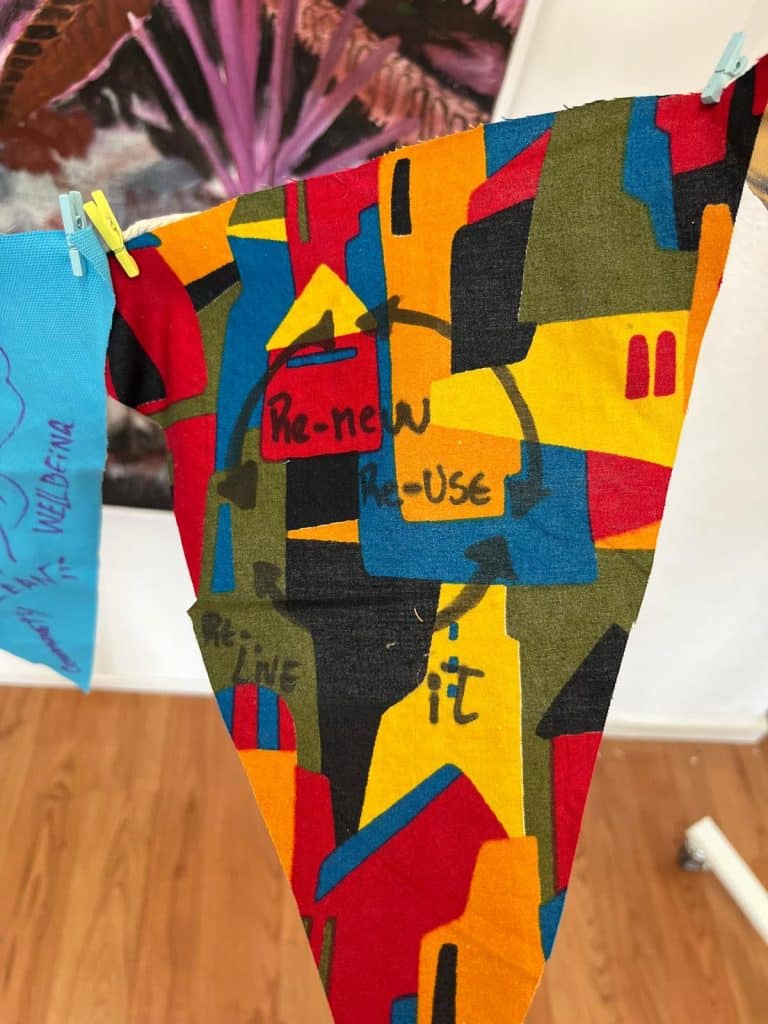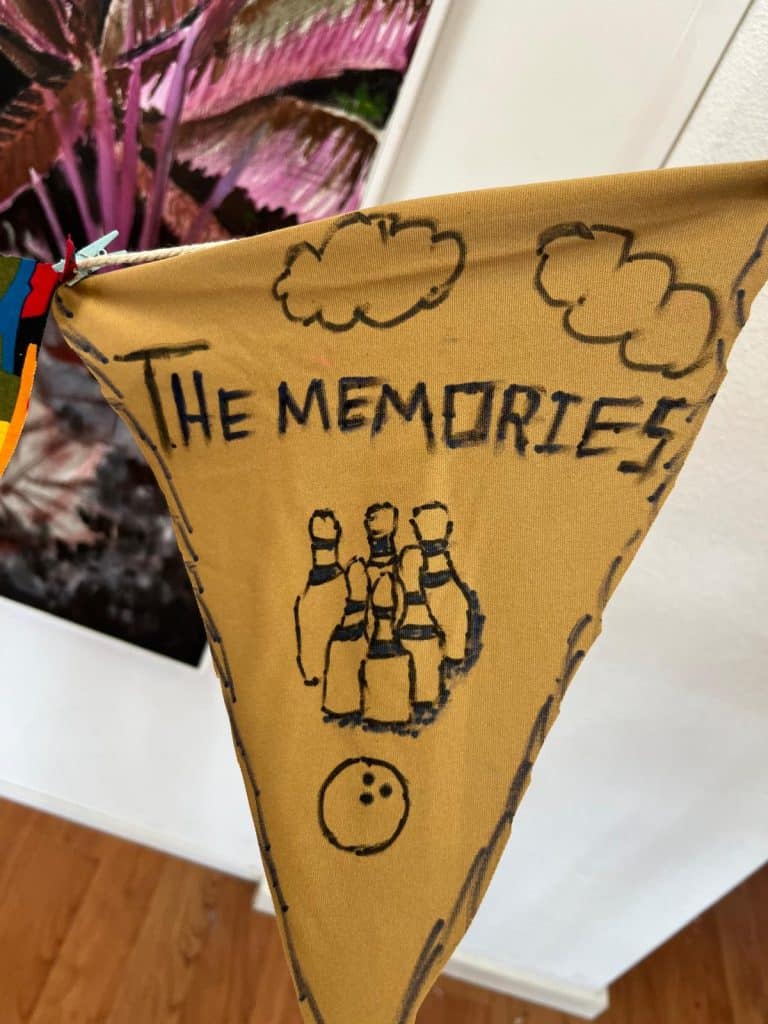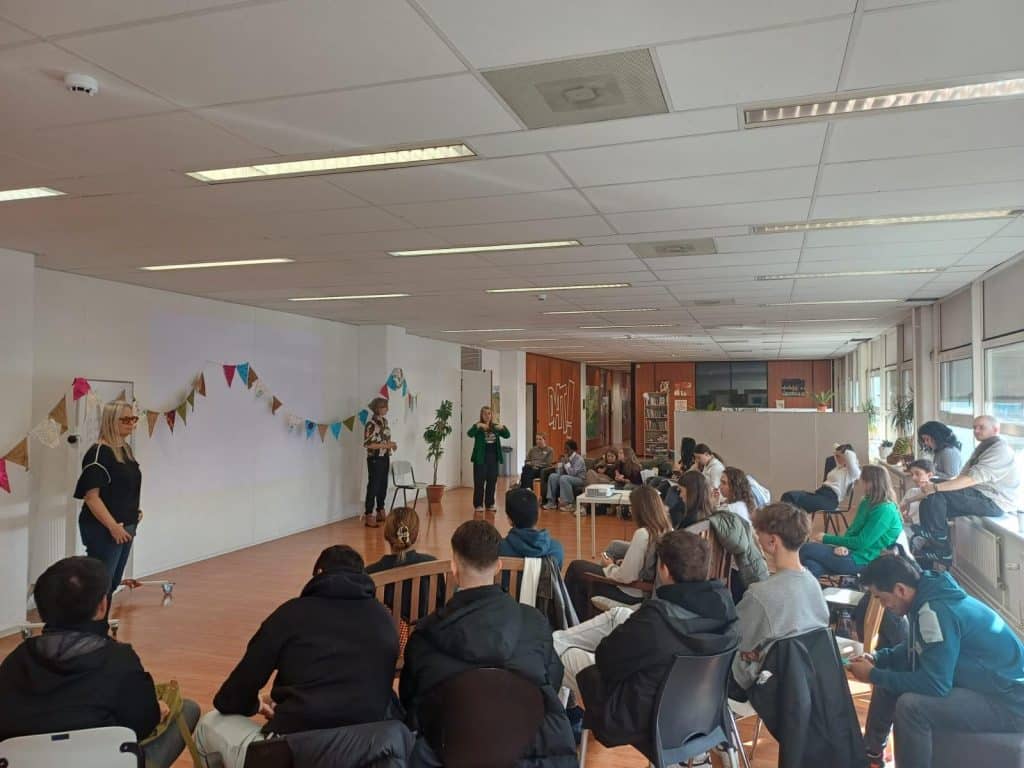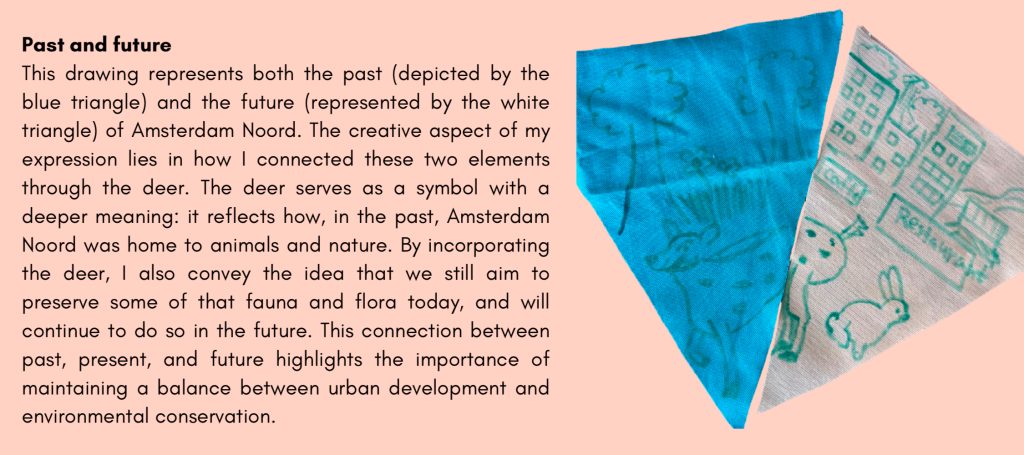We were honored to receive Dominique Hes as a guest lecturer in our lab minor. Dr Dominique Hes is the award winning author of the book Designing for Hope: Pathways to regenerative sustainability, a further 6 books and over 100 papers. She was a non-executive board member at Greenfleet (planting ecosystems to offset carbon) and Trust for Nature; co-founder of internationally award winning Place Agency, and ex director of Thrive Research Hub at Melbourne University.
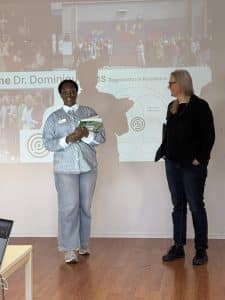 Dominque Hes visited our lab in Amsterdam-Noord at the Buikslotermeerplein, the area of research for our lab learners. This place is changing rapidly, which comes with pain and rejection of the new developments with a lot of locals, but for other people it’s not moving fast enough. The city is in transition. The city is changing.
Dominque Hes visited our lab in Amsterdam-Noord at the Buikslotermeerplein, the area of research for our lab learners. This place is changing rapidly, which comes with pain and rejection of the new developments with a lot of locals, but for other people it’s not moving fast enough. The city is in transition. The city is changing.
Change is life
Dominique starts the session with explaining that change is part of life. Look around. The seasons are change, whether conditions like fire, flood or drought are change. We age, that is a constant change too. Needing to integrate new things and people in your city is change. Growth is chance.
People generally don’t like things to change. They want things to stay the same. People adopt change at different speed. The innovator is looking constant for the “hot new thing”, but the laggards fear change the most and may never be able to imagine being happy in the new, changed place.
Grief is real
Grief is also part of life. It is everywhere. To introduce the topic of grief and the potential for finding common ground and enhancing local communities or urban tourism, we take a look how different cultures deal with grief through unique traditions. Some examples from around the world are:
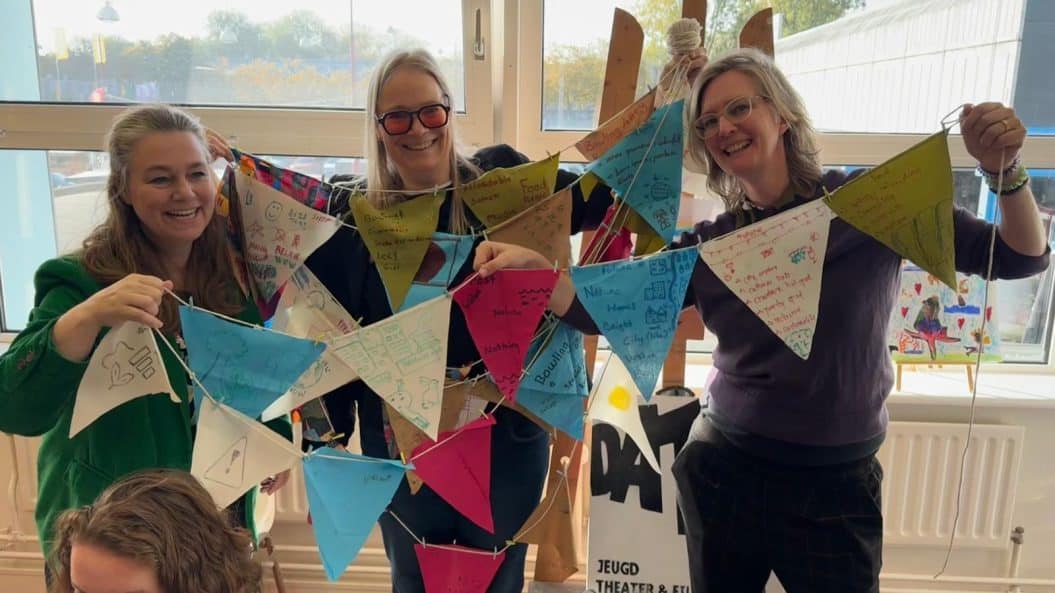
 solely on mourning, several traditions celebrate the life of the deceased with music, dance, and festivities. These traditions often involve the community and family, providing support and strengthening bonds during times of grief. Rituals and offerings are common, serving as a way to honor the deceased and seek their blessings. Embracing these rituals can provide comfort and a sense of continuity, helping us navigate the complexities of life and death.
solely on mourning, several traditions celebrate the life of the deceased with music, dance, and festivities. These traditions often involve the community and family, providing support and strengthening bonds during times of grief. Rituals and offerings are common, serving as a way to honor the deceased and seek their blessings. Embracing these rituals can provide comfort and a sense of continuity, helping us navigate the complexities of life and death.